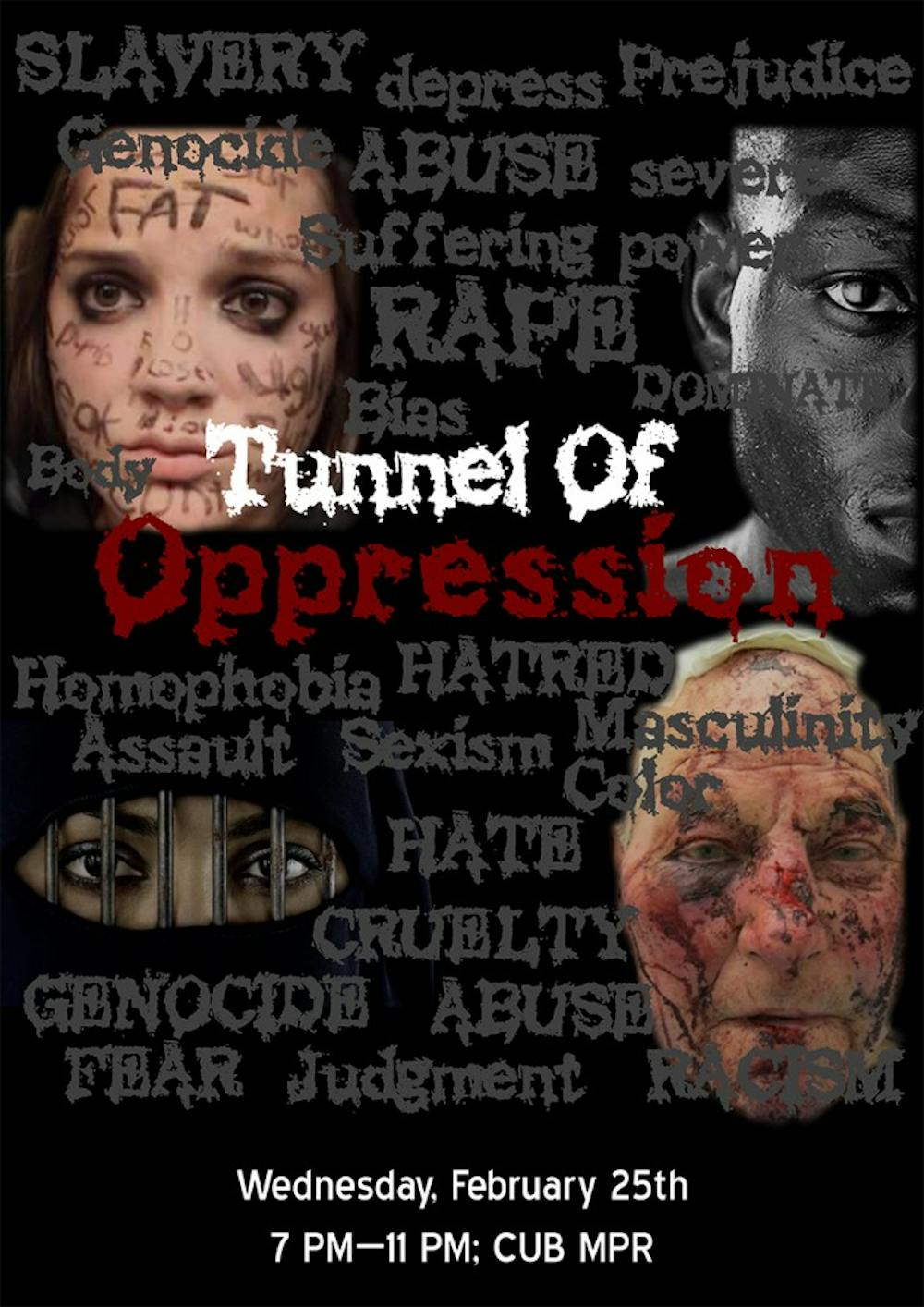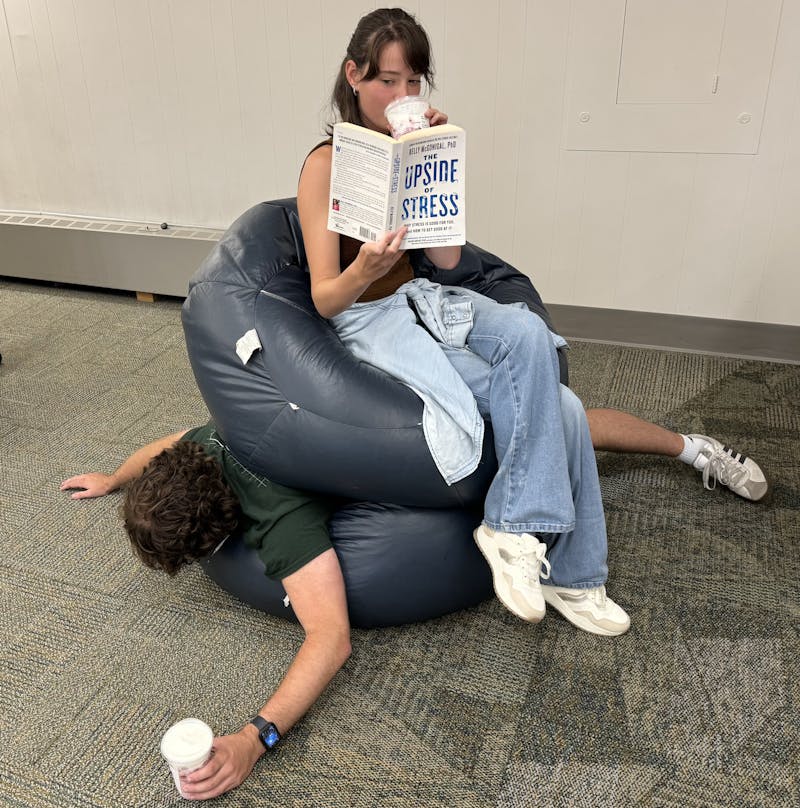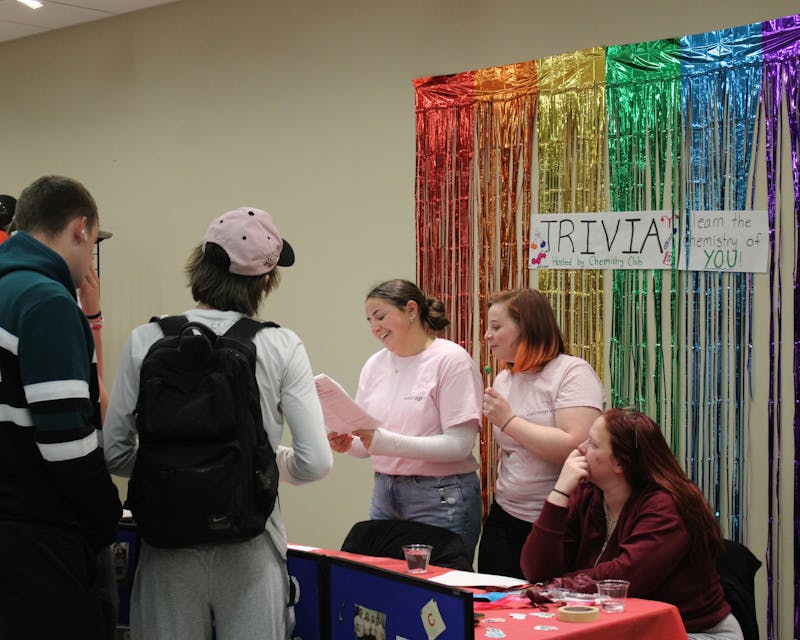The tunnel was dark and moody and consumed by truths that will break your heart.
Last week, the office of housing and residence life ushered students through the Tunnel of Oppression.
The tunnel is designed to open people’s eyes to everyday oppression, Kieffer residence director Jeff Ward said. The event was designed to strike participants with discussion on issues such as race, physical disability, LGBTQs, religion, sizism and social media.
The “tunnel” consumed the Ceddia Union Building’s multipurpose room with curtained walls and moody lighting. Residence life staff guided nearly 100 participants through spaces governed by one topic of choice. Each space was decorated with statistics and satire about varied types of oppression. One space incorporated video. Multiple spaces engaged participants with performance art.
“The takeaway is individual,” Ward said. “Everyone is going to perceive the tunnel differently based on their own experiences that they have [had] in their own lives.”
Each session was followed by small group discussions guided by volunteer Shippensburg University faculty. Participants were encouraged to discuss what segments of the tunnel they felt were the most poignant.
Ward encourages students to get involved in programming and activities. “You don’t necessarily need to learn in the classroom, but you can learn through different events and different experiences that happen across campus everyday.”
Housing and residence life hosts “Cultural Connections” programs, events designed to highlight specific cultures that may be underrepresented on-campus. The next program will discuss the LGBTQ community. It will take place on March 3 in Presidents Hall.
---
The above article covers the Tunnel of Oppression event well enough, but I could not shake the compulsion to share my personal experience inside the tunnel. I arrived expecting to nab a few quotes and maybe some pictures of the event for my write-up, but what I ultimately took away was something much more impactful.
The tunnel tackled difficult topics. They are not difficult because we do not talk about them, they are difficult because we do not speak out against them. We talk about degrading Instagram pictures taken by our friends, but we do not tell them it was wrong. We “downvote” posts on Yik Yak, but we hesitate to address the larger issues with our peers. Just as someone abuses their anonymity to create hateful posts, we abuse our anonymity by not speaking out when they pop up in our feeds.
When you go through the tunnel, you quite literally come face-to-face with these varied biases and stereotypes. One wall depicts the marginalization that occurs within the African-American community, not just without. Another wall shares statistics about homeless children across the nation. All of the walls are covered in truths that, frankly, are difficult to face.
One of the most striking displays, I found, was a wall consumed by negative Tweets — real Tweets, I was told, from real Shippensburg University students. I wish I could say that these Tweets were fun or interesting, but that would not be true. These tweets were created to victimize, marginalize and bully. I am heartbroken to know that my peers are capable of such hatred and ignorance, when I also see the good in all of them.
Everyone needs to experience the Tunnel of Oppression. You will take away different messages from the tunnel than your friends, but one message lingers synonymously among all participants: biases and oppression are very real, and now is the time to stand against them.




The Slate welcomes thoughtful discussion on all of our stories, but please keep comments civil and on-topic. Read our full guidelines here.